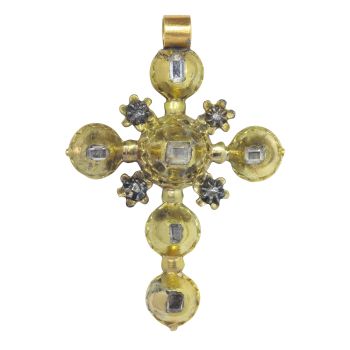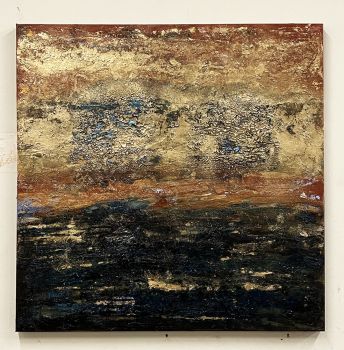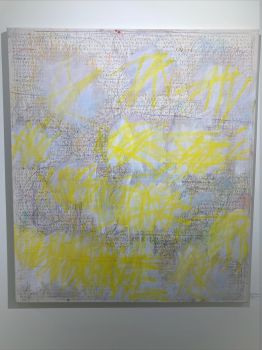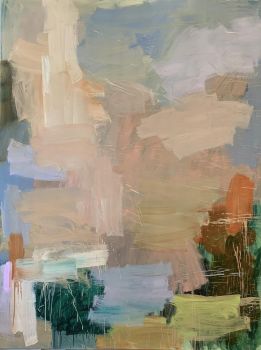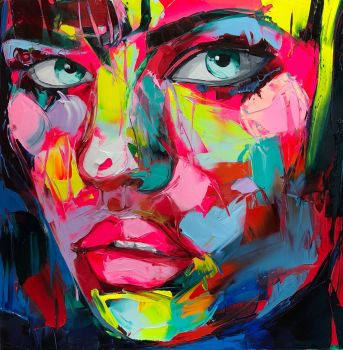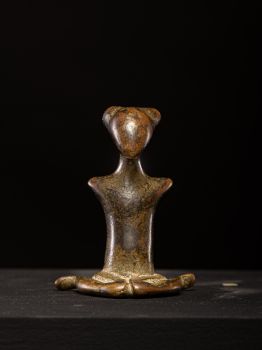16th C Portraits of Sultans Murad III (1546–1595) and Isa Celebi (died in 1403), identities inscribe 1580 - 1600
Unknown artist
Original oil on canvas
95 ⨯ 76.50 ⨯ 2.90 cm
ConditionVery good
Price on request
Spectandum Gallery
- About the artworkThe capture of Constantinople in 1453 by the young Mehmed II ("The Conqueror") not only sparked this interest, but the young sultan himself, who invited European painters to his court, also fueled this trend. The period following his reign saw relations between the Republic of Venice and its powerful neighbor reach a state of relative calm, initiating a period of exchanges and trade. Situated at the crossroads of East and West, the Ottoman Empire absorbed a wide range of influences, including Chinese, European, and Persian, to produce a distinctive and cohesive artistic language across a range of decorative arts with elements both rococo and baroque, marked by an increasingly open attitude towards all things European. The production of Orientalist paintings is rich in topographical landscapes of Istanbul, genre scenes, and portraits of notable Ottomans.Europe's fascination with its powerful Muslim neighbors inspired a wave of narratives and paintings about the Ottoman world. The two portraits of Sultans Murad III (1546-1595) and Isa Celebi (died in 1403), depicted in three-quarters view and wearing large turbans and richly embroidered cloaks, were directly influenced by the paintings of Paolo Caliari, called Paolo Veronese. The original series of fourteen portraits of Ottoman sultans by Veronese inspired the creation of several painted decorations between the late 16th and 19th centuries. The paintings served as significant diplomatic gifts.
A complete set, executed by one of Veronese's disciples, is now in the Collection Bayerische Staatsgemäldesammlungen, Munich (inv. No. 2243) (R. Kultzen and P. Eikemeier, Venezianische Gemalde des 15. Und 16. Jahrhunderts, Bayerische Staatsgemäldesammlungen, Munich, 1971, pp.236-9). It is worth noting a set of portraits kept at the Topkapi Palace in Istanbul, which were shipped from Venice to Istanbul in September 1779. They were most likely the result of a request from the Grand Vizier Sokollu Mehmed Pasha, who wished to establish a local genealogy of the Sultans, to Niccolò Barbarigo, the Venetian ambassador to Constantinople, for such works. Paolo Giovio (1483-1552), the Italian historian and biographer, is also known to have owned a series of portraits of Ottoman sultans that he commissioned based on a group of miniatures that Barbarossa, the admiral of Suleiman the Magnificent, offered to a French commander in gratitude in 1453. Only one painting from this series still exists, depicting Sultan Mehmed I (now in the Archaeological Museum of Como). In addition to the complete sets in Munich and Istanbul, at least two fragmentary sets of sultan portraits exist in the Topkapi Palace. Literature :
F.Çağman, "The Sultan's Portrait: Picturing the house of Osman", Topkapi Palace Museum, Istanbul, June 6-September 6, 2000, Istanbul, Işbank, 2000). https://www.sothebys.com/en/buy/auction/2022/royal-noble/the-newbattle-turks-a-set-of-6-historical - About the artist
It might happen that an artist or maker is unknown.
Some works are not to be determined by whom it is made or it is made by (a group of) craftsmen. Examples are statues from the Ancient Time, furniture, mirroirs, or signatures that are not clear or readible but as well some works are not signed at all.
As well you can find the following description:
•“Attributed to ….” In their opinion probably a work by the artist, at least in part
•“Studio of ….” or “Workshop of” In their opinion a work executed in the studio or workshop of the artist, possibly under his supervision
•“Circle of ….” In their opinion a work of the period of the artist showing his influence, closely associated with the artist but not necessarily his pupil
•“Style of ….” or “Follower of ….” In their opinion a work executed in the artist’s style but not necessarily by a pupil; may be contemporary or nearly contemporary
•“Manner of ….” In their opinion a work in the style of the artist but of a later date
•“After ….” In their opinion a copy (of any date) of a work of the artist
•“Signed…”, “Dated….” or “Inscribed” In their opinion the work has been signed/dated/inscribed by the artist. The addition of a question mark indicates an element of doubt
•"With signature ….”, “With date ….”, “With inscription….” or “Bears signature/date/inscription” in their opinion the signature/ date/ inscription has been added by someone other than the artist
Are you interested in buying this artwork?
Artwork details
Related artworks
- 1 - 4 / 12
Peter Paul Rubens (circle of)
Portrait of a man dressed up as an oriental man1620 - 1630
Price on requestGallerease Selected
Adrianus Johannes Groenewegen
Schaapsherder met kudde1874 - 1963
Price on requestGalerie Het Noorderlicht
1 - 4 / 24- 1 - 4 / 24
Unknown artist
MATERNITY FIGURE, FANG-MABEA, CAMEROON.PROVENANCE R.CAILLOIS-P.RATTON.1920 - 1930
Price on requestSpectandum Gallery
1 - 4 / 12

















